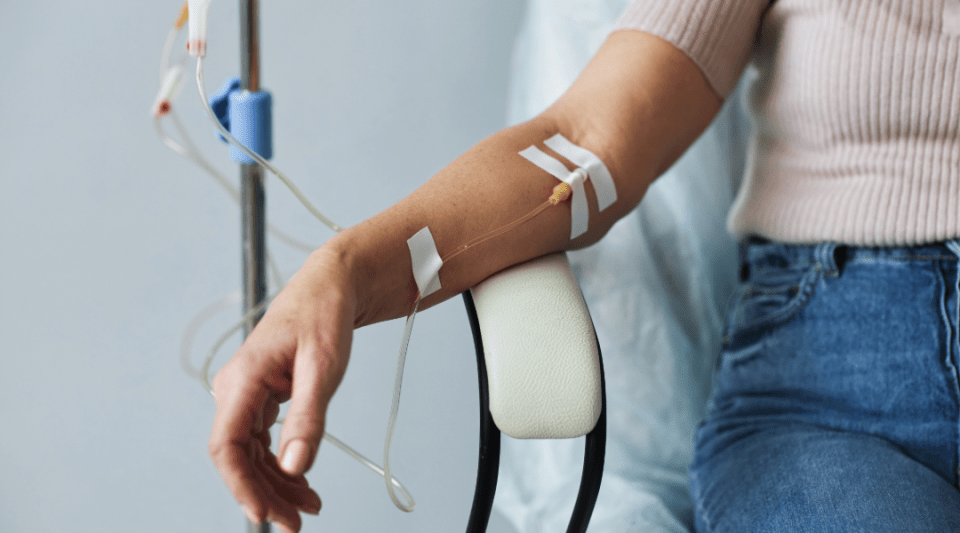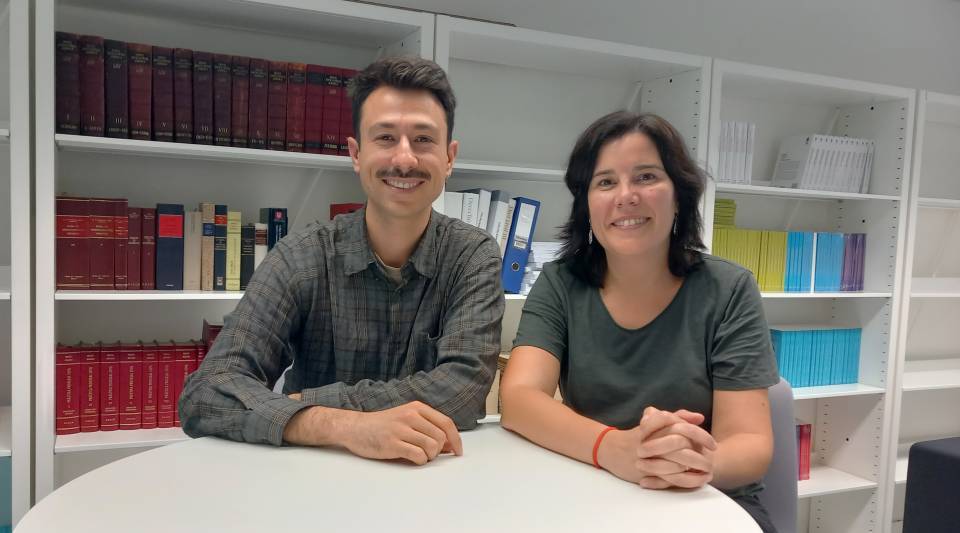28 November 2024
- What is it?
- Symptoms
- Risk factors
- Tests and diagnosis
- Treatment
- Disease evolution
- Living with disease
- Research lines
- Frequently asked questions
- Prevention
Treatment of Ischaemic Heart Disease
Once the patient has been diagnosed with acute coronary syndrome (unstable angina or acute myocardial infarction), then they should remain in hospital and rest. If the infarction is due to the total blockage of a coronary artery, then treatment aims to unblock the artery as quickly as possible since every minute counts.
Medicines used during the acute phase are:

Acetylsalicylic acid (aspirin): stops the platelets from aggregating and sticking together inside the artery and therefore reduces the chance of thrombus formation (stationary blood clots). It is the first drug that should be administered at the very onset of chest pain, even while at home.

Other platelet aggregation inhibitors: these reinforce the action of acetylsalicylic acid as they also prevent platelet aggregation. The most common one is clopidogrel, but prasugrel and ticagrelor are also used in particularly severe cases.

Anticoagulants: by means of a different mechanism, these also aim to dissolve any thrombi (clots) inside the artery. Different types of heparin are used and may be administered by either intravenous or subcutaneous injections.

Beta-blockers: they work by slowing down the patient’s heart rate so it is in a more restful state and demands less oxygen. They also reduce the risk of arrhythmias.

Pain relieving medicines: in several cases patients may require morphine if the pain is very intense.

Nitroglycerine: can be administered as a tablet, sprayed underneath the tongue or by intravenous injections. It is used to dilate the heart’s arteries allowing more blood to flow through them.

Thrombolytic or fibrinolytic agents. In cases where a thrombus is completely blocking an artery, these drugs can be administered in order to break the clot down and thin the blood. They are very powerful and only indicated in very specific cases; they are not administered very often, unlike other medicines used for ischaemic cardiomyopathy.
In certain cases the best option is to use drugs to control any ischaemic attacks. In other cases, when dealing with a more severe problem or if medication is insufficient, it is better to try and unblock the artery.

Angioplasty or percutaneous coronary revascularisation. The first step is to take a coronary angiogram, or perform a coronary catheterisation. If an artery is suspected of being totally blocked, then the catheterisation must be performed urgently and without hesitation. The patient should be transferred in a medically equipped ambulance to the nearest health centre capable of realising a coronary angiogram. In cases of angina or infarction without total occlusion of an artery, the coronary angiogram can be deferred for up to 24 hours.
Coronary angiography will reveal which artery or arteries are affected. Using the catheter that has already been introduced at the patient’s groin or wrist, the doctor guides a small balloon to the site of the obstruction and then inflates it with air. And so the procedure helps the artery remain open. Additionally, in the majority of cases, a stent (a spring-like metal tube) is inserted to reinforce the lining of the artery and prevent it from closing again. This procedure is called an angioplasty with stenting.
While stents are almost always metal, they are categorised into two types, drug-eluting or covered and bare metal or uncovered, in function of whether or not they are coated with a drug.
Coronary angiography or coronary catheterisation is an invasive test used to visualise the coronary arteries. Cardiologists who specialise in haemodynamics will carry out the test which involves puncturing an artery in the arm or groin (under local anaesthetic) and then inserting a catheter until it reaches the coronary arteries. A contrast agent is injected through the catheter and fills the inside of the blood vessel. X-rays are used to capture images of the artery from different angles which, together with the contrast agent, help create a general picture of the obstructed area. The resulting images are like a mould taken from inside the artery.
After the examination, the catheter is removed and very strong compression applied to the punctured artery where it was inserted to prevent heavy bleeding since blood flows through arteries at a higher pressure than veins. If the radial artery (in the wrist) was used as the insertion point, then compression bandaging should be applied for 4 hours and patients are recommended to avoid sudden movements or lifting heavy weights with the corresponding hand for 1 week. If the femoral artery (in the groin) was punctured, then patients must wear compression bandaging for 12 hours and can start walking after 24 hours.
The risk of complications is low; the most typical problem is bruising as a result of puncturing the artery. Bear in mind that this examination involves a certain amount of X-ray radiation and should be conducted with precaution in anyone allergic to iodinated contrast agents.
Not only does coronary angiography provide important information for the diagnosis of ischaemic cardiomyopathy, but it also offers a view of the blood’s passage through the coronary arteries which helps determine the treatment.

Coronary revascularisation or heart bypass surgery. Sometimes more than one coronary artery is blocked or there are multiple lesions which are difficult to treat with an angioplasty. An alternative solution for such cases is to perform heart bypass surgery.
It is performed in an operating theatre under general anaesthetic. The surgeon will open the sternum to allow good access to the heart.
The blood stream is sent to a heart-lung machine; this acts as an artificial heart and maintains the blood supply to all of the body’s organs while the heart is treated.
Surgery consists in sowing one of the patient’s own veins or arteries into a position parallel with the diseased vessel, without touching the obstructed section. This creates a bypass, or a secondary circulation, through which the blood can reach the heart muscle without any obstructions. Surgeons use one of the patient’s own arteries, called the internal mammary artery, or a vein taken from the legs.
Stents are spring-like metal tubes that are placed inside the obstructed coronary artery by means of coronary angiography or a coronary catheterisation. A stent is placed to prevent an artery from becoming obstructed again shortly after it has been unblocked.
The two main risks arising after stenting (the placement of a stent) are:
Thrombosis. When platelets circulating in the blood come into contact with the metal stent they tend to clump together (aggregate) and form a clot. The clot can occlude the artery once again and lead to a heart attack. This process is known as “stent thrombosis”. Patients therefore take platelet aggregation inhibitors to stop platelets from sticking together and forming clots inside the stent. There is a very high risk of thrombosis in the first few weeks after stenting and so the recommended treatment includes two different platelet aggregation inhibitors. Treatment duration depends on multiple factors, including the type of stent implanted.
Restenosis. After placing a stent, cells in the coronary artery start to grow towards the inside of the stent until they cover it completely; this process is known as endothelialisation. This process is initially beneficial because the stent gets covered with the artery’s own cells and so the metal surface can no longer promote platelet aggregation, thus reducing the likelihood of clot formation and the appearance of a thrombus. However, if the cells continue to grow towards the middle of the stent they may eventually start to obstruct the artery and the symptoms of angina will reappear. This process is known as “stent restenosis”.
There are two main types of stent:
Bare metal or uncovered stents. These are usually made from steel or cobalt chromium. Stents are essentially metal meshes formed into the shape of a tube. They are available in several different diameters and lengths, providing a good fit inside any artery. Artery cells grow over the inside of bare metal stents more quickly than they do drug-eluting stents; therefore the risk of thrombosis lasts for less time, but there is a greater risk of restenosis. After receiving a bare metal stent, patients must take two platelet aggregation inhibitors for at least one month, after which they should continue indefinitely with a single anti-aggregant.
Drug-eluting or covered stents. They have the same basic cylindrical mesh structure as bare metal stents, but the metal surface is coated with a drug. The drug inhibits the progress of artery cells growing towards the middle of the stent and therefore reduces the likelihood of stent restenosis. On the other hand, this means the metal surface of the stent remains in contact with the blood for more time, hence the risk of thrombosis extends over a longer period. Therefore patients must take a combination of two platelet aggregation inhibitors for longer (3, 6 or up to 12 months).
The essential objective of long-term treatment is secondary prevention, i.e., to ensure there is no recurrence of the angina or infarction (heart attack). This requires a combination of lifestyle changes and drug therapy.
Lifestyle modification
Lifestyle modification is the key to avoiding or preventing Ischaemic Heart Disease as it is much more effective than any pharmaceutical or surgical treatments and does not have any contraindications. Unfortunately, despite this, it sometimes proves to be the most difficult point to achieve.

Stop smoking. Although it is sometimes difficult, making every effort to quit is always worthwhile

Eat a balanced diet. Patients must take into account both the amount and type of food they eat. Firstly, you should maintain a suitable weight according to your age and height. Secondly, it is important to follow a diet rich in fruits, vegetables, pulses and fish. Regarding meats, you should preferably eat chicken, turkey and rabbit as they have a lower fat content. Finally, only occasionally eat red meats (beef, duck, lamb), cured meats, confectionery and pastries.

Exercise regularly. Physical exercise improves cardiac muscle tone and function. It also reduces the likelihood of one of the body’s arteries becoming blocked, besides creating a feeling of physical and emotional well-being. Exercise helps control other risk factors, such as obesity, high blood pressure or diabetes. You do not need to perform intense physical exercise, but it should be done on a regular basis. Choose an activity that you like, e.g., walking, swimming or cycling, and complete vigorous sessions for 30 minutes, 5 times a week.

Relax. Stressful situations, often related to work or family problems, have a negative impact on our health. The fact that you have suffered a heart attack can also produce a great deal of anxiety and depression. It is important you learn to relax and dedicate a part of each day to looking after yourself. If you find it difficult, then seek help from a professional.

Control the risk factors. Maintaining the diseases associated with atherosclerosis (obesity, diabetes, high blood pressure or hypercholesterolemia) under good control helps improve your prognosis.

Moderate alcohol consumption. Recommendations are two glasses of wine per day for men and one glass per day for women. The consumption of distilled drinks can have negative repercussions on your cardiovascular health.
Some medical centres offer cardiac rehabilitation programmes for patients with Ischaemic Heart Disease or cardiac insufficiency (a weak heart). These programmes are based on regular physical exercise performed under supervision, together with diet and lifestyle recommendations adapted to each individual. They have proven very useful in terms of improving patient evolution and are recommended in the vast majority of cases.
Patients with Ischaemic Heart Disease must take a combination of drugs to reduce the heart’s oxygen consumption, dilate the coronary arteries and prevent the formation of a new blockage.

Nitroglycerine and its derivatives (nitrates, either as tablets or transdermal patches): these drugs are known as vasodilators. They relax the arteries and veins, including the coronary vessels, thereby increasing blood flow in the affected area and eliminating chest pain from angina. They are also available as ‘quick relief’ tablets; patients with Ischaemic Heart Disease should carry 1 or 2 tablets in their pocket. Whenever the chest pain appears you should stop any physical activities, sit down and place a tablet under your tongue. If the pain subsides in 10 minutes you can restart the activity, but remember to tell your doctor about the episode at your next appointment. By contrast, if the pain does not disappear you should take a second tablet. And if after this the pain persists, then you must call the emergency medical services.

Beta-blockers (bisoprolol, carvedilol, nebivolol, metoprolol, atenolol, etc.): decrease blood pressure and heart rate, hence the heart requires less oxygen to function correctly. They can also reduce the risk of arrhythmias. Studies have shown that beta-blockers can increase the life expectancy of patients who have had an infarction.

Platelet aggregation inhibitors. Patients who have suffered any event brought on by atherosclerosis must take platelet aggregation inhibitors permanently, unless they are contraindicated. These drugs stop platelets from clumping together which has the effect of thinning the blood and reduces the risk of thrombus formation inside a coronary artery. Acetylsalicylic acid (aspirin) is the most common platelet inhibitor.

Statins. These drugs reduce blood cholesterol levels. They also help stabilise and prevent the rupture of atheromatous plaques, reduce blood vessel inflammation and decrease the likelihood of an infarction. Statins are therefore indicated in all patients with ischaemic cardiomyopathy, even if they have acceptable cholesterol levels.

Other anti-anginal agents are calcium channel blockers, relax the muscles of the coronary arteries and mitigate the effects of obstructions and spasms; ivabradine reduces heart rate and so the heart requires less oxygen and ranolazine acts on the primary and secondary blood vessels and decreases the risk of angina. This latter it is particularly effective in diabetic patients.
Treatment is tailored to each patient; the drugs and doses may vary greatly from one person to the next. It is important that you know what treatment you are prescribed so you can inform the doctor if you are treated for Ischaemic Heart Disease.
Substantiated information by:


Published: 20 February 2018
Updated: 20 February 2018
Subscribe
Receive the latest updates related to this content.
Thank you for subscribing!
If this is the first time you subscribe you will receive a confirmation email, check your inbox


